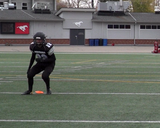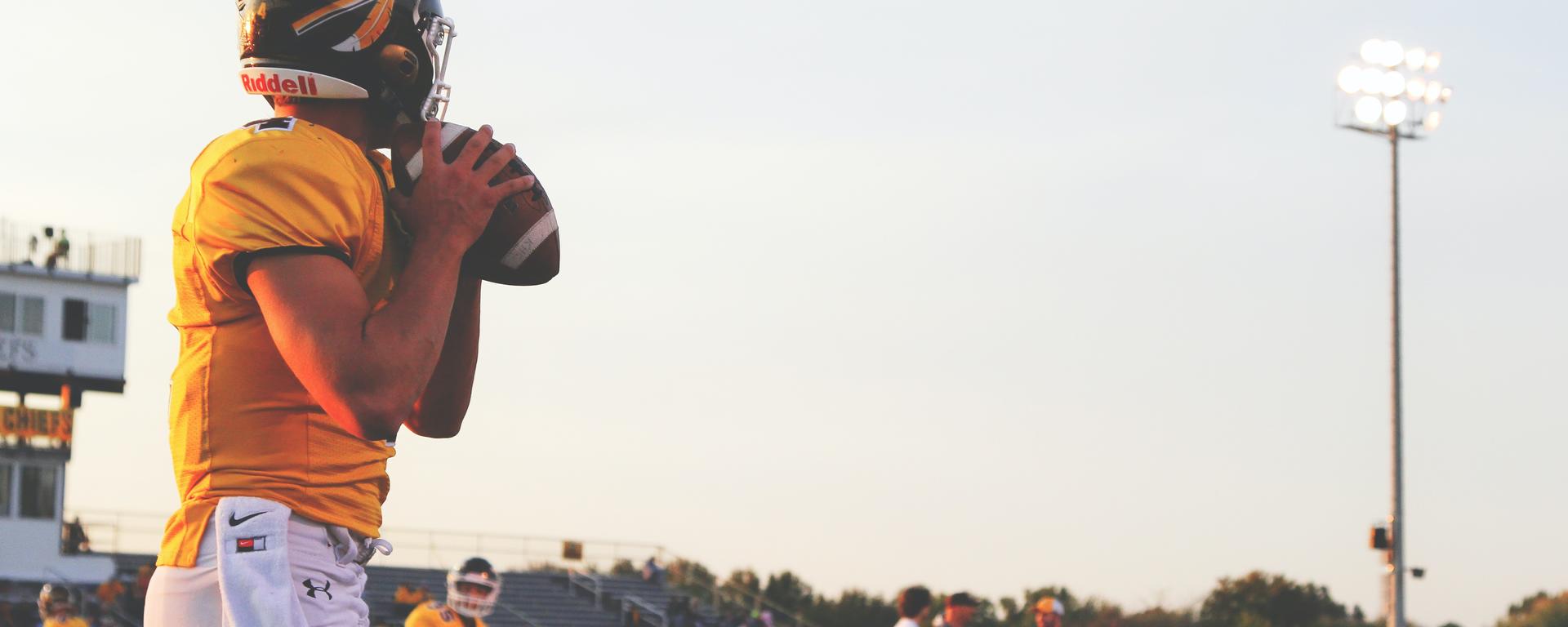About SHRED injuries Football Neuromuscular Training Warm-Up Program
This program has been developed with input from physiotherapists, strength & conditioning coaches, football players, and members of Football Canada.
The SHRED Injuries Football neuromuscular training warm-up program is being evaluated in youth club players. The program was developed with ongoing feedback from football coaches, players, strength and conditioning staff, physiotherapists, epidemiologists and members of Football Canada.This warm-up is designed to be completed in 10–12 minutes at the beginning of every practice and game.
Neuromuscular training has been shown to reduce the incidence of injury by >30% in youth. Our current research is evaluating the effectiveness of this program in reducing injuries in Canadian youth football players, including the preventative effects of concussion injuries.

Categories
Neck control
These exercises should be performed at the beginning of the warm-up.

Static neck contractions
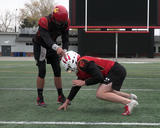
Bobbleheads in 3-point stance
Aerobic & Agility
To perform these exercises, have players line up in groups along the end line or the width of the field. Use cones or yard markers to designate channels for each group. Players will perform exercises in this section down the length of the channel.

Figure 8 jogging

Forward zig-zag run
Backwards zig-zag side shuffle

Walking lunges with torso rotation, leg & arm lift
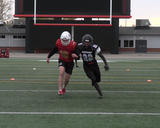
Shoulder-to-shoulder run

Partner plant and cut
Balance & Strength: Partner exercises
The following exercises are performed on the spot and with a partner. No distance coverage is required. Have players in each group spread out along their channels, covering the full field space.
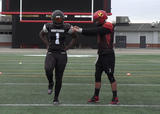
Partner nudges
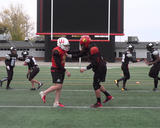
Single-leg partner jousting
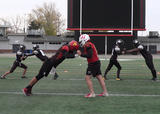
Standing partner push-ups
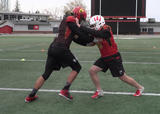
Standing wrestling
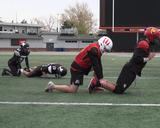
Nordic hamstring curl
Balance & Strength: Individual exercises
The following exercises are performed individually on the spot. No distance coverage is required.

Front plank on elbows with rotation
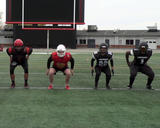
Dynamic squats
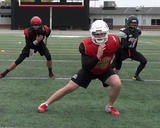
4-D lunge
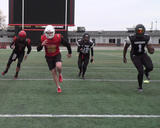
Hops

Jumping jacks
Agility
Players should return to their original groups along the end line or side lines to complete the following exercises within their channels.

Shuttle runs
